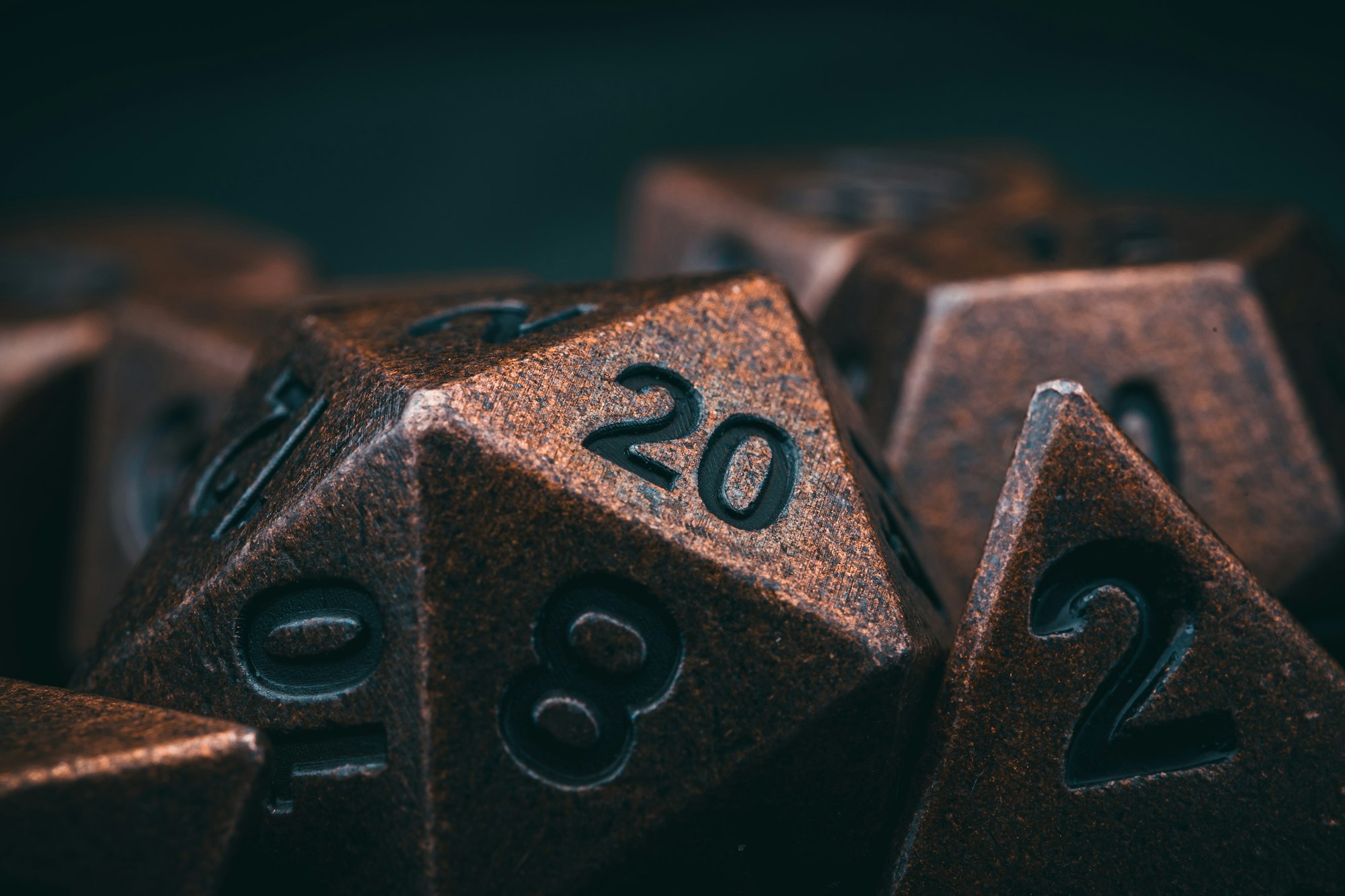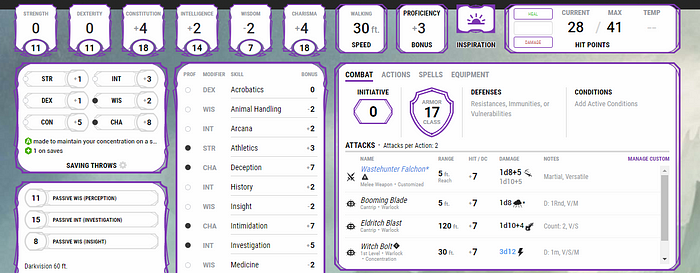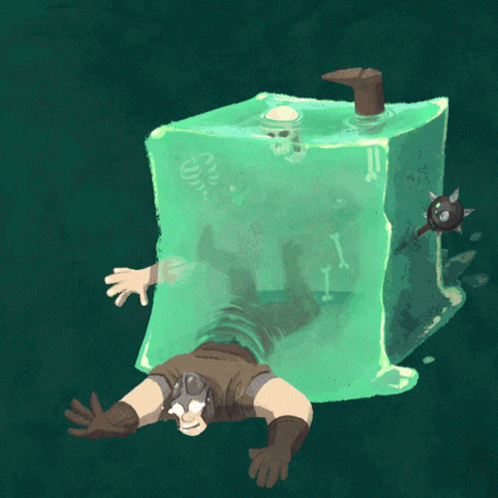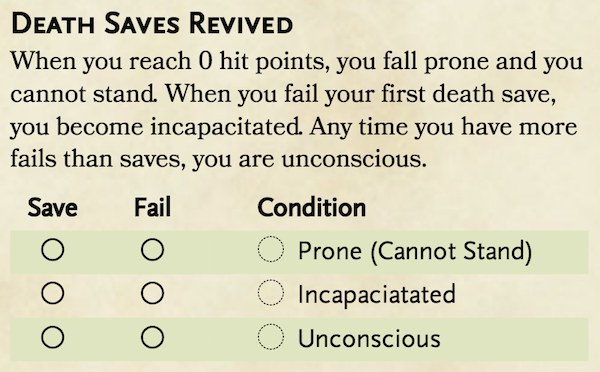Breaking Down the Dungeons & Dragons Character Sheet — Part 3
Learning what hit points are, how to get them, and how they work in the game

You’ve got a character idea, and you’ve rolled up their stats. Awesome! In order to actually play them, the next thing you need to determine is their health. This is where hit points come in.
Here’s everything you need to know about what they are, how to get them, and how to use them in your game.

What are Hit Points?
Hit points are actually really simple. They’re a concrete number that is used to track how physically healthy your character is. It’s like having a health bar in a video game. Your hit points (or HP) increase as you level up, which means you can take bigger hits the more powerful you get.
Each class has a unique hit die — meaning the die they roll to get their hit points and recover them in-game — ranging from a d4 (poor Wizards) to a d12 (yay Barbarians!). After determining your hit point base at First level (more on that in a second), for each time you level up, you roll a hit die and gain that many hit points plus your Constitution modifier (Con Mod).
Per level: Previous HP + 1 Rolled Hit Die + Con Mod = Total HP
For example, if you’re a Barbarian with 15 hit points at level one (you got lucky) and a +3 for Constitution because you’re just that beefy, when you level up to level two, you’d roll a d12 and add your Con Mod to it. Say you roll a 9. So that’s 9 plus 3 plus 15 is 27. Congratulations! You’ve nearly doubled the number of hits your Barbarian can take before they fall.
How to Get Your Hit Points
Your hit points start with a number from your class’s hit die, as I mentioned. You’ll add your Constitution modifier to it at each level; this makes sense because Constitution, if you remember, is the stat that determines physical resistance and endurance.
There are two ways to get your hit points from your hit die when you play D&D: you can either use a fixed value, or you can roll for them.
Using a fixed value for hit points means you start with a certain number of hit points and, every time you level up, you add that number of hit points to your maximum pool.
Some DMs go by the book and give you the average hit points for your hit die — 2 for a Wizard, 6 for a Barbarian, etc. Some DMs (cough, cough: me) will be kind to you and give you the maximum possible hit points for your character at every level — 4 for a Wizard, 12 for a Barbarian, etc.
Whichever way you do it, fixed value HP is pretty easy to keep track of and update, so it’s a great way to ease beginners into the game.
Rolling
If you’re looking for a slightly more varied and interesting way to determine your HP, then you can always choose to roll it.
To roll HP, you roll your hit die, and whatever number it lands on is the amount of HP you have. You’d do this at every level, meaning you could have stellar HP at level one that barely increases at level two, then shoots up again at level three, and so on.
This method is slightly more difficult to keep track of, as it requires remembering rolls, and it can lead to characters having ridiculously low HP if you’re unlucky. But it can also make for great roleplay opportunities — why is your character physically weak, and what are they going to do about it?
Healing and Dying
So getting your hit points is all well and good, but how do you use them? To put it in really basic terms, your hit points are used when you heal and when you’re hit.
How Dying Works
In D&D, there’s a lot of combat and damage-taking. After all, not all dragons are friendly. Nor are most goblins. Or some doors. Or most cliffs.
In combat, when you’re hit with an attack, it does damage. You’ll also occasionally take damage from environmental hazards like traps, dangerous terrain, or falls. The damage is based on the roll of a die (d4-d12, for particularly brutal attacks), along with modifiers related to weapons and other factors. I’ll go into more detail about this later, but it’s enough, for now, to say that the damage is a certain number of hit points you’ll subtract from your total hit point pool.
If you’re particularly unlucky, and a hit drops you to zero hit points, you’ll be knocked down. You won’t immediately die in most cases, though (more on that in a second).
There are a few situations where you will die instantly, however.

- If an attack does more than enough damage to get you to zero hit points, it might kill you instantly. There’s some debate about how much damage exactly results in an instant kill (some say it has to be double the health you have left, some say it has to be more than that), but regardless, taking a massive hit can obliterate your character.
- There are some spells that negate death saves. One of the most famous is Power Word Kill, a ninth-level Enchantment. This spell does exactly what it says on the tin — it targets one creature, and the caster speaks a word that kills it instantly if it has less than 100 total hit points. It’s an incredibly intense spell, and there are a couple of others that can do something similar. Luckily, they’re all pretty high-level, so you’re unlikely to encounter them until you’re more experienced.
How Healing Works
Because you can get hurt, you need to have a way to heal yourself. You can regain hit points either physically, magically, or through resting.
To regain hit points physically, you can roll Medicine checks. This means that, in the context of your game, your character is doctoring themselves up or getting doctored up — stitches, medicine, the whole nine yards. This usually only works on physical damage. Spell damage is a little more complicated.
To regain hit points magically, you’ll usually need the help of a caster of some description. There are lots of healing spells in D&D (for obvious reasons). Some of them are relatively cheap, like Cure Wounds and Lay on Hands, and can be used pretty frequently for party maintenance in and out of combat. Some are more intense — intense enough to bring back the dead! Those are usually expensive, high-level spells with very limited uses. For the sake of your healer’s sanity, try not to need them too often.
When you take either a short or long rest in D&D (30 minutes or eight hours, respectively), you can heal up. It’s basically assumed that your character just needs a nap, some fluids, and maybe some stitches for the damage to be less intense. During a short rest, you can use a hit die — from a pool based on your level along with your Con Mod — to determine the amount of HP you get back. During long rests, you can usually get all of your HP back, unless you’re affected by another condition (more on that in a later part).
How to Not Die — Death Saves!
You don’t die immediately when you hit zero hit points. This is where death saves come in.
Death saves are basically D&D’s way of giving you a chance to cheat death and save your character without having to use those expensive healing spells, which is especially useful at lower levels when it’s easier to get knocked down. It’s basically your character being in limbo from the damage their body has received. In-game, they might happen over the course of a few seconds.

Death saves work on a system of threes. You roll a flat d20 (flat meaning with no modifiers attached) several times. Three rolls over ten mean you live, three rolls under ten mean you die. It’s a simple system, but a terrifying one.
Your party can help you here by making medicine checks or healing you magically. A successful medicine check stabilizes a dying character and stops them from actively dying, though they still have zero hit points. Healing magic returns some hit points and stops the process of dying, although you might remain unconscious, depending on how much you get back. There are also some class features that can stabilize your character, such as Relentless Rage for Barbarians.
That being said, if you take more damage at zero hit points, especially if it’s a significant hit, you’re going to die. Get those diamonds ready, friends.
Up Next — Spells!
That’s hit points in a nutshell! They’re relatively straightforward, thank goodness. Hit points actually do a lot for your RP capability. You can play a character low on health as physically disabled, tired, or powering through it for the sake of their ideals. You can flavor healing in any way you like, and even play on the effects of it — after all, is dying less impactful if you’re brought back?
Up next, we’re handling one of the most complicated parts of character building in D&D: spells! I’ll explain where they come from, who gets them, and how to use them.
Originally posted on the Medium SUPERJUMP Magazine publication on January 16, 2022.
